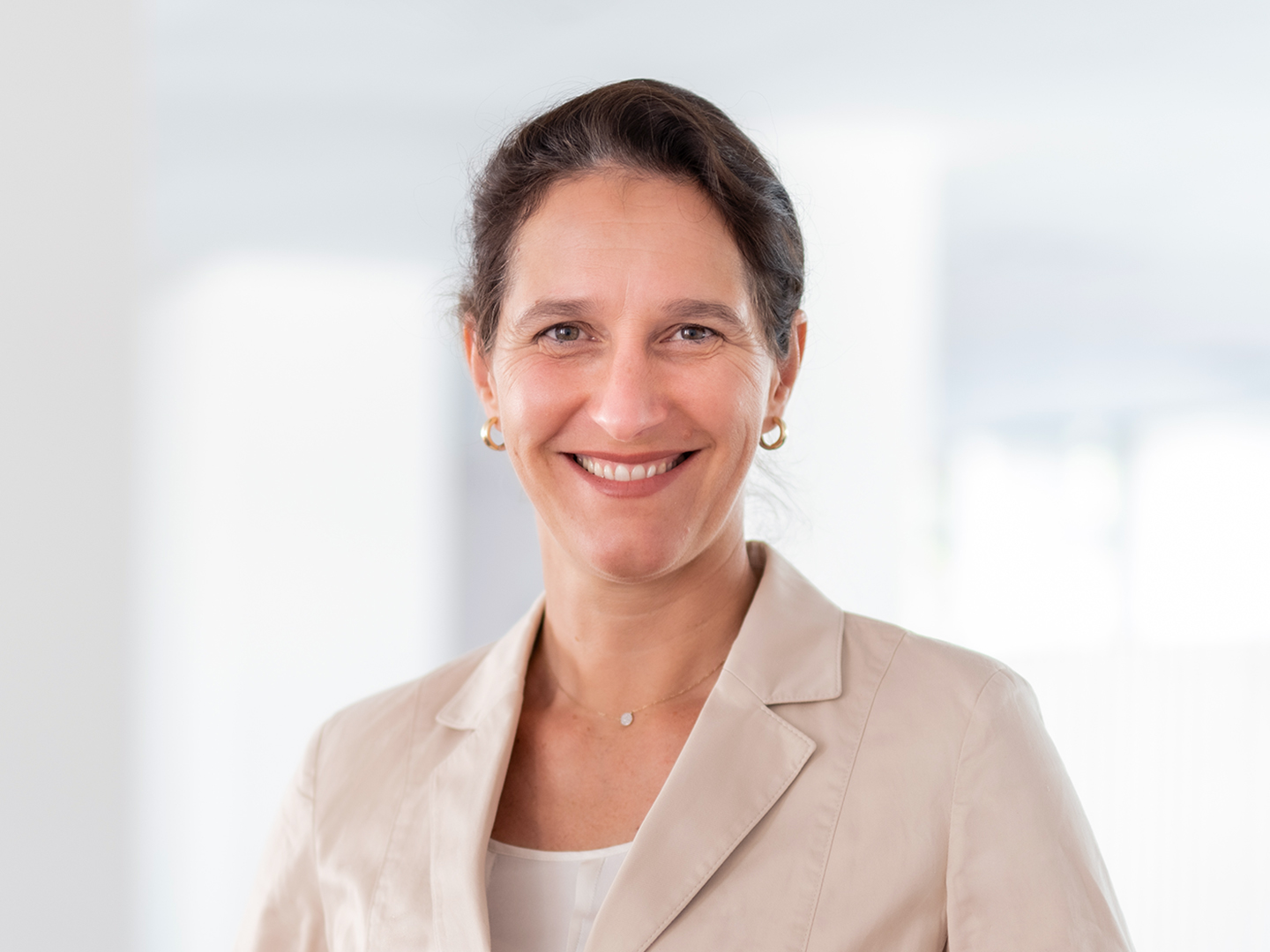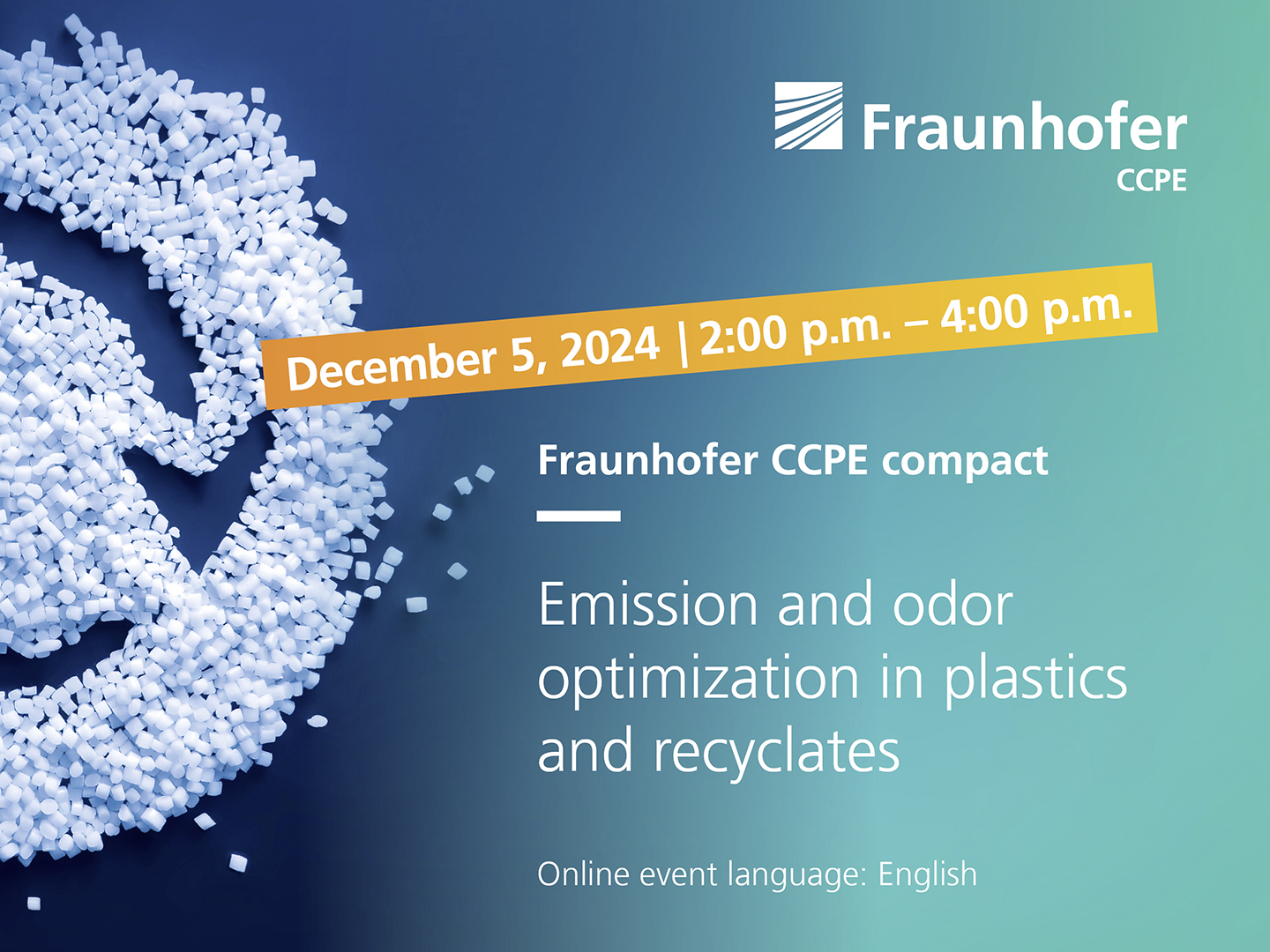Emission and odor optimization in plastics and recyclates – An important quality feature
The odor of recycled plastics is a major challenge for their recycling and requires customized solutions. Recyclates can have undesirable odors that come from various sources, such as microbiological degradation or residues of previous contents. This is precisely where the Fraunhofer CCPE compact on December 5, 2024, on the topic of “Emission and odor optimization in plastics and recyclates” comes in. Prof. Andrea Büttner, Board of Management Member of the Fraunhofer CCPE and Director of the Fraunhofer Institute for Process Engineering and Packaging IVV, provides initial answers to key questions in this interview.


Odor is an important quality characteristic of plastics. However, recycled materials often have an odor problem. How does this occur and what challenges do we face in terms of odor neutralization?
Andrea Büttner: The various substances that occur specifically in plastic packaging waste have a range of different odors. These also include molecules with a moldy, cheesy or sour smell. Such contaminants can come from countless sources and, as odors, are often extremely prominent, although they are usually only present in quite low and difficult-to-detect quantities – a challenge for their analytical detection and determination. Using highly specialized methods that not only include high-resolution separation and detection techniques such as mass spectrometry, but also the targeted decoding of odorants with trained expert noses, we have now succeeded for the first time in identifying some of these contaminants in plastics. The results show that in addition to odorants from previous contents such as food or cleaning agents, other processes can also lead to the unpleasant odors. These include the microbiological degradation of organic substrates such as food scraps, but also aging plastics or the thermal degradation of residual contaminants in the recycling process itself. An additional challenge during the recycling process itself is, of course, the combination or further reactions of the odor-active substances and other accompanying substances, which, depending on the processing, can always produce new odor profiles.
At the Fraunhofer CCPE, you are conducting intensive research into the qualitative upgrading of recycled materials through odor optimization. What approaches are there?
Andrea Büttner: The approaches are manifold, ranging from the cleaning and sorting of plastic waste to the depletion of materials, for example through solvent-based recycling, to the use of additives such as odor-binding or neutralizing substances or targeted coatings to create an odor barrier.
In general, however, it would be important to completely rethink some products. For example, many detergents and cleaning agents, as well as cosmetic products, have a significant odor due to their packaging materials. The sometimes strong fragrancing strategies are a major challenge here, as are the complex and very persistent odorant compositions. Added to this is the decorative design of packaging, which presents us with a major challenge if we want to recover odorless and color-neutral recycled plastics. For these reasons, but also because a relevant portion of these substances find their way into washing water and emissions and do not necessarily end up at their intended destination, namely in the noses of consumers, some of today's products and their forms of presentation must be critically questioned.
What are the implications for the production and processing of plastics? Also in relation to industry?
Andrea Büttner: Industry is increasingly paying close attention to good “design-for-recycling” rules when designing its packaging and products – albeit not everywhere in the world, which is a challenge in a globalized market. For example, the right choice of plastic is crucial for the existing recycling processes. There are both favorable and recyclable monomaterials and unsuitable material pairings, such as PET/PVC combinations, which, however, are now almost no longer produced. But printing inks, paper labels or laminating adhesives were also not originally developed for melting during the recycling process and can therefore lead to strong recyclate odors in unfavorable combinations. Therefore, we still have to deal with numerous sources of contaminants, even if new products according to “design-for-recycling” should become a global standard. There is still a long way to go, and we still have a lot to do with an “old” chemical world. That is why we at the CCPE are developing specially adapted recycling processes with outstanding cleaning performance to effectively remove these contaminants, which are still present in plastic waste even after the best industrial sorting, before melting (re-granulation).
How can this contribute to a circular economy? Are there still hurdles to overcome?
Andrea Büttner: The research approaches mentioned above definitely lead to higher-quality recyclates, which can then, if possible, be reused in their original applications and markets, thus creating a true “circular economy”. Experts call this “closed-loop recycling”.
We at CCPE have already been able to demonstrate this for a variety of applications, even for the extremely demanding fiber and film applications. But in the large market segment of contact-sensitive packaging or even food packaging with direct contact, the high consumer protection requirements, in particular with regard to food law compliance, must of course be met. Here, CCPE offers industry a very high level of expertise in sensory and instrumental-analytical quality assessment and process optimization. This also makes us optimistic about tackling this next task.
You can register free of charge for the online event Fraunhofer CCPE compact “Emission and odor optimization in plastics and recyclates” on December 5, 2024 from 2:00 p.m. to 4:00 p.m. at https://www.ccpe.fraunhofer.de/de/aktuelles/veranstaltungen/2024/fraunhofer-ccpe-compact-odor.html. The event will be held online in English.
Last modified: